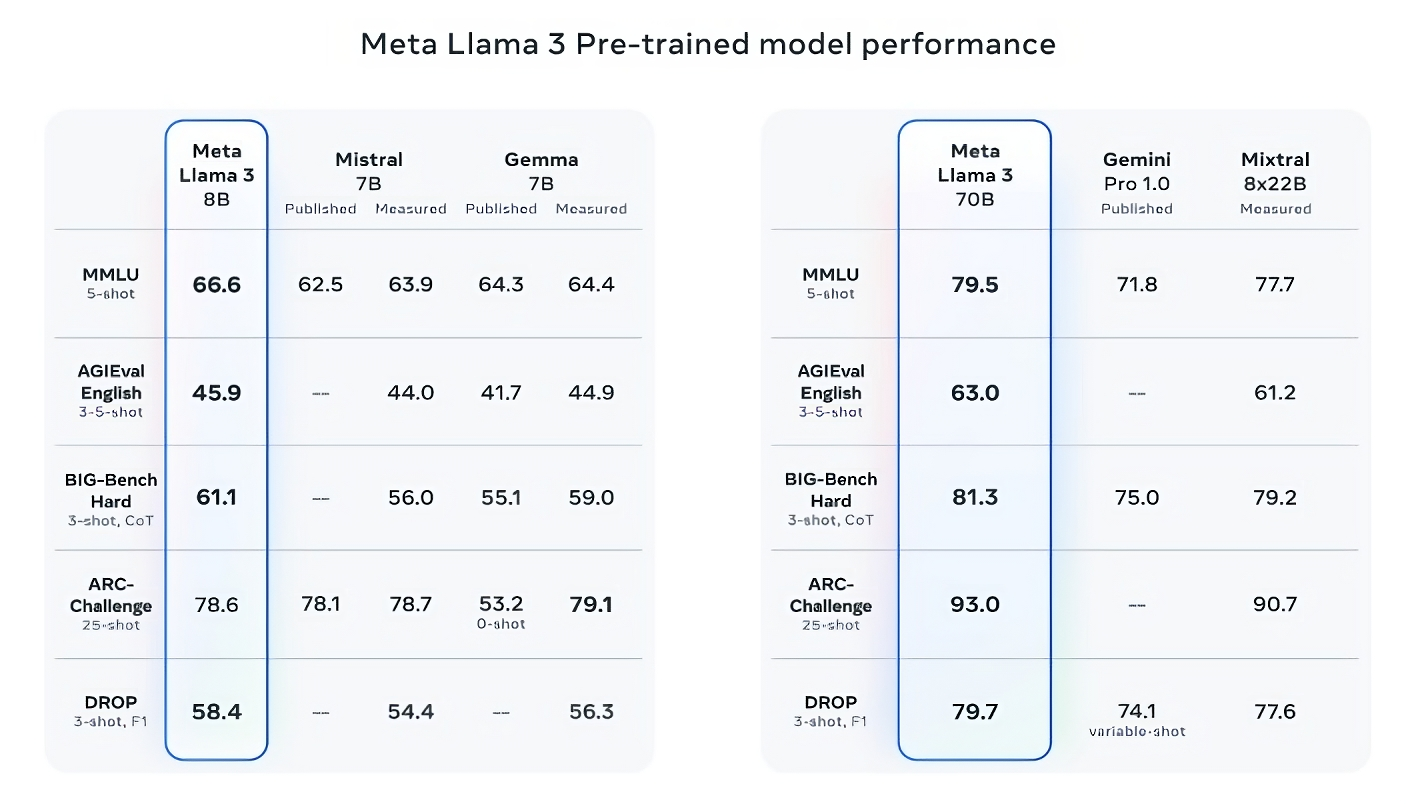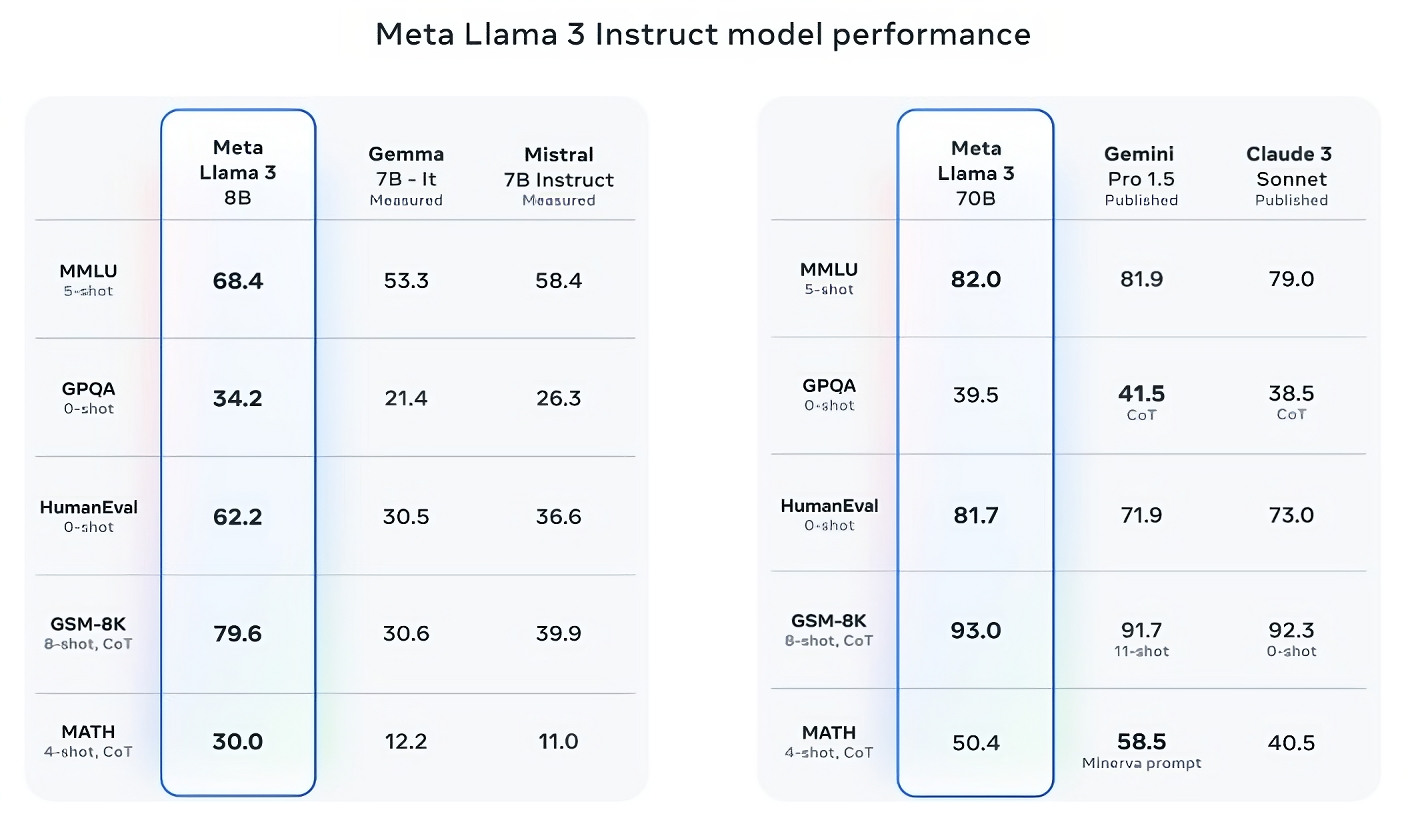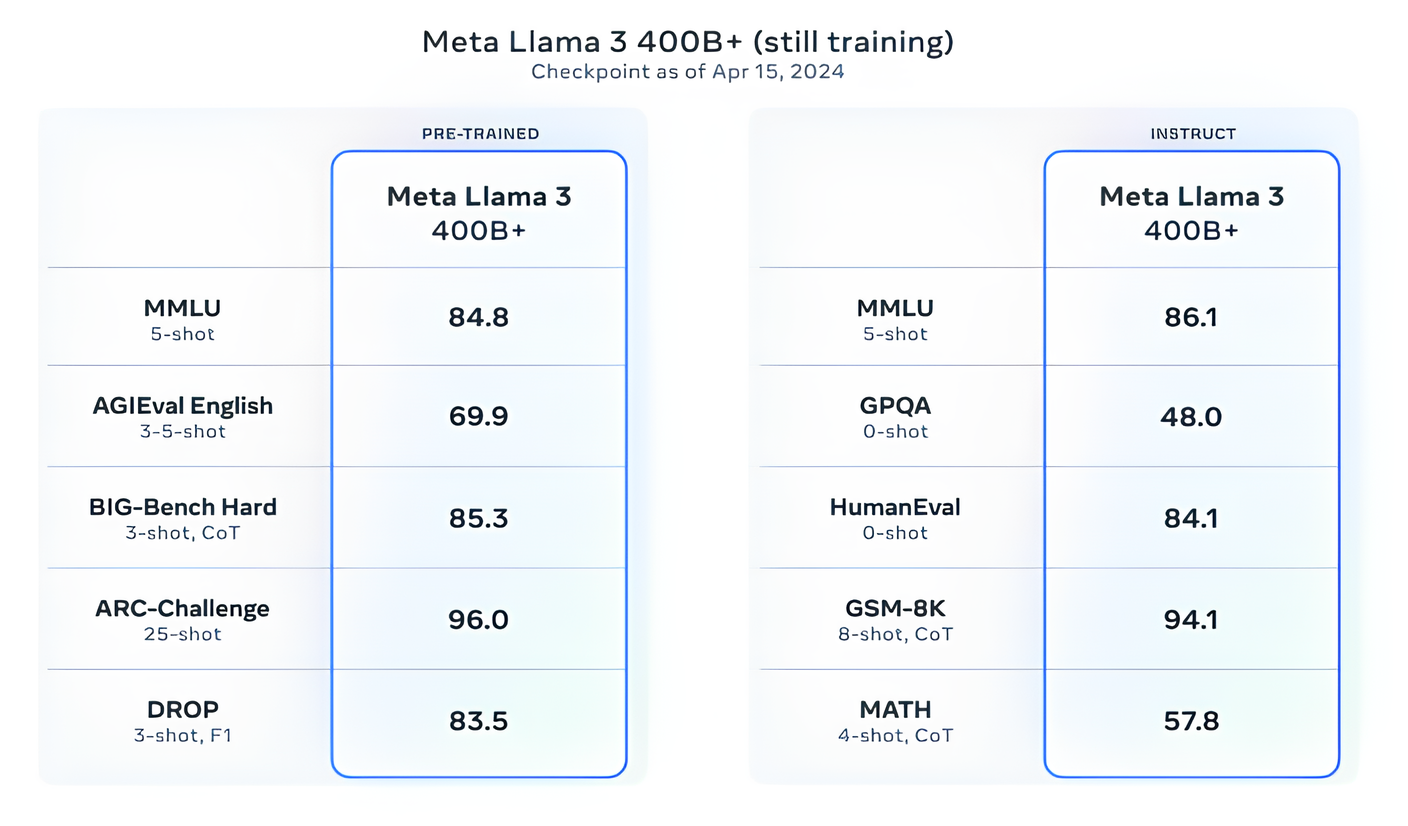Meta Unveils Llama 3: The Next Leap in Open Generative AI Models
Meta has launched the latest iteration of its renowned Llama series of open generative AI models: Llama 3. With two models already released and more to follow, Meta promises significant advancements in performance and capabilities compared to its predecessors, Llama 2 8B and Llama 2 70B.
Meta Llama 3
Meta introduces two models in the Llama 3 family: Llama 3 8B, boasting 8 billion parameters, and Llama 3 70B, with a staggering 70 billion parameters. These models represent a major leap forward in performance and are among the best-performing generative AI models available today.
Performance Benchmarks: Meta highlights Llama 3’s impressive performance on popular AI benchmarks such as MMLU, ARC, and DROP. The company claims superiority over comparable models like Mistral 7B and Gemma 7B, showcasing dominance in multiple benchmarks.

Enhanced Capabilities: Llama 3 offers users more “steerability,” lower refusal rates, and higher accuracy across various tasks, including trivia, history, STEM fields, and coding recommendations. Llama 3’s larger dataset, comprising 15 trillion tokens, and advanced training techniques contribute to these improvements.

Data Diversity and Safety Measures
Meta emphasizes the diversity of Llama 3’s training data, sourced from publicly available sources and including synthetic data to enhance performance across different languages and domains. The company also introduces new safety measures, including data filtering pipelines and generative AI safety suites, to address toxicity and bias concerns.

Availability and Future Plans
Llama 3 models are available for download and will soon be hosted on various cloud platforms. Meta plans to expand Llama 3’s capabilities, aiming for multilingual and multimodal capabilities, longer context understanding, and improved performance in core areas like reasoning and coding.
Conclusion: With the release of Llama 3, Meta continues to push the boundaries of open generative AI models, offering researchers and developers powerful tools for innovation. While not entirely open source, Llama 3 promises groundbreaking advancements and sets the stage for future developments in AI technology.













